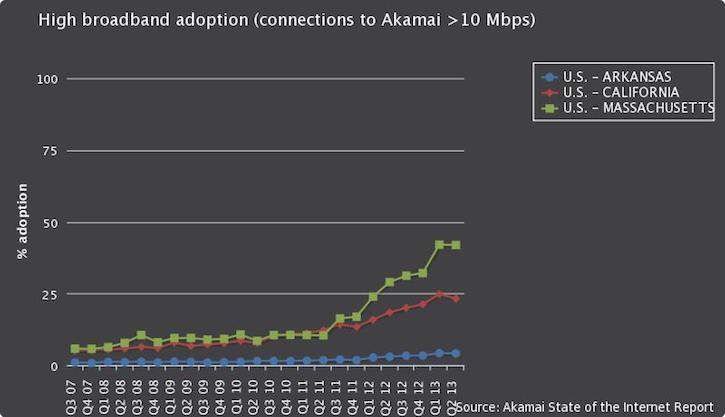
California is only middle of the pack when it comes to high speed broadband adoption, at least as measured by Akamai in its most recent State of the Internet report, for the second quarter of 2013. Of the broadband connections made to Akamai’s content delivery network from IP addresses in California, 23.2% were at speeds of 10 Mbps or better, ranking our state 20th in the country.
Top of the chart was Massachusetts at 41.9%; Arkansas came last at 4.1%. In other words, there’s a factor of 10 difference in high speed broadband availability across the U.S., and California falls squarely in the middle.
We’re well behind Washington, 11th at 31.0%, and Oregon, 12th at 28.1%. Nevada ranks 25th nationally, a couple of percentage points behind us at 21.4%. Arizona lags at 17.2%, in 33rd place.
Geography matters. If you get on Interstate 95 in New Hampshire and drive south to Virginia, you’ll go through the top 10 states. And only the top 10 states.
It’s a similar picture if you look at average speeds. California ranks 19th, with an average connection to Akamai’s servers running at 8.85 Mbps, behind Washington and Oregon, and ahead of Nevada and Arizona. Washington and Utah – both averaging better than 10 Mbps – bump New York and Pennsylvania out of the top 10. Otherwise, the I–95 corridor rules.
Akamai’s list is the best apples-to-apples broadband speed comparison available across all 50 states. The rankings are based on consistent measurement of millions of connections under real-world conditions, at all times of day, all the way through to a destination server and back. It ignores the false speed claims submitted by service providers to state broadband mapping programs, and looks down the length of a carrier’s network, and not just between a home and the nearest neighborhood node.
